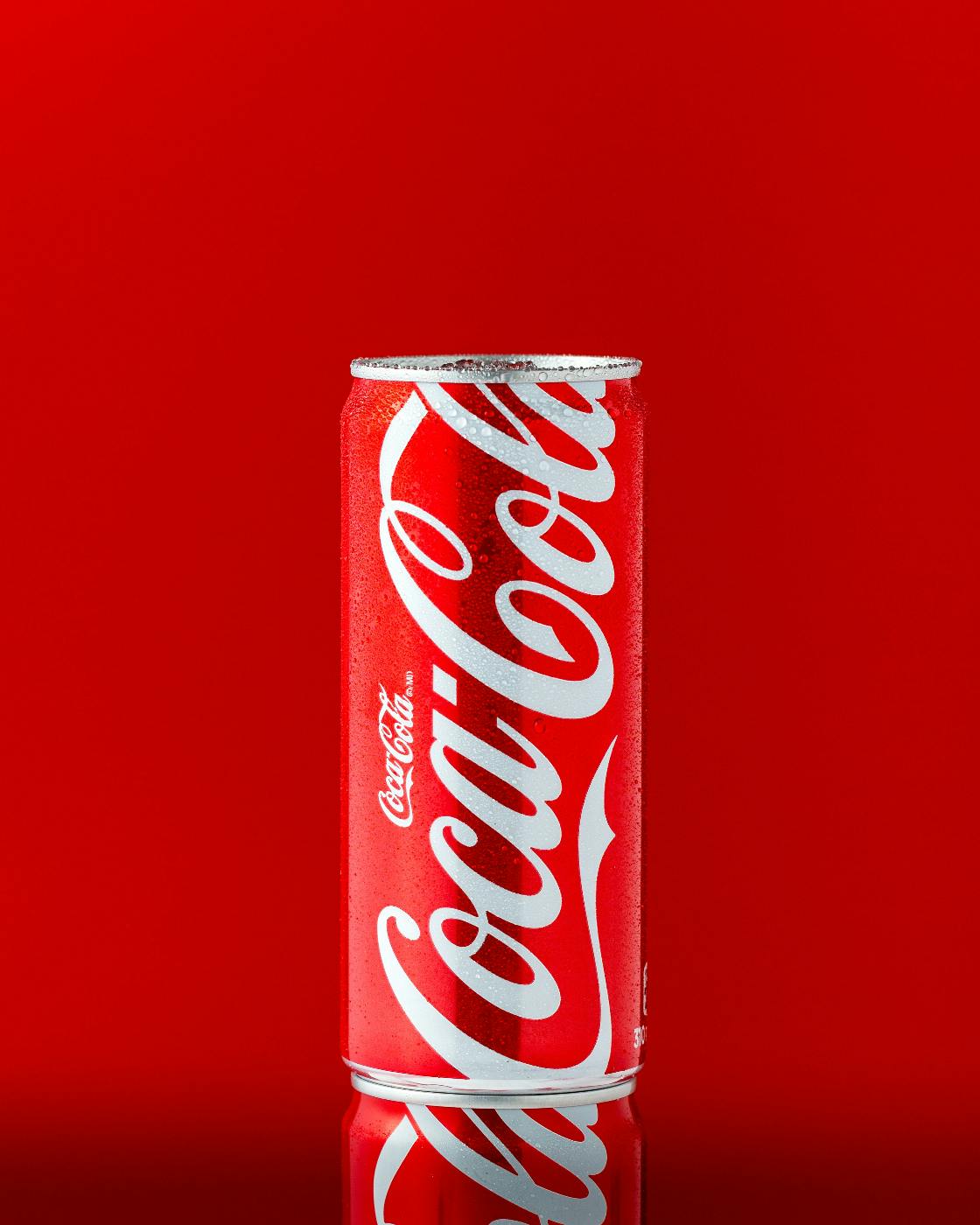

The Science of Successful Branding: Case Studies and Insights
Successful branding can influence consumer perceptions, build trust, and drive long-term customer loyalty.
Branding is a powerful force in the world of business. It's the art and science of creating a distinctive identity for a product, service, or company. Successful branding can influence consumer perceptions, build trust, and drive long-term customer loyalty. In this article, we will explore the science behind successful branding , exploring key principles and sharing case studies highlighting the strategies and insights that have propelled some of the world's most iconic brands to success.
Branding as an Emotional Connection
At its core, branding is about creating an emotional connection between a brand and its audience. It's not just about logos, colors, or slogans; it's about how a brand makes people feel. Successful brands understand that emotions play a crucial role in consumer decision-making. They tap into these emotions to create a bond that goes beyond the functional benefits of a product or service.
Case Study: Apple Inc.
One of the most iconic examples of emotional branding is Apple Inc. Apple's brand is synonymous with innovation, creativity, and a sense of belonging. They have mastered the art of making their customers feel like part of a community, appealing to their desire for uniqueness and self-expression. Apple's design aesthetic, sleek product packaging, and marketing campaigns all contribute to the emotional connection that has made Apple a global brand leader.
Consistency is Key
Consistency is a fundamental principle in successful branding. A brand should present a unified and coherent image across all touchpoints, from its website to its packaging and advertising. This consistency builds recognition and trust over time.
Case Study: Coca-Cola
Coca-Cola, one of the world's most recognizable brands, has maintained a consistent image for over a century. The red and white color scheme, the classic contour bottle, and the timeless "Enjoy Coca-Cola" slogan have remained largely unchanged, fostering a sense of nostalgia and reliability. This consistency has allowed Coca-Cola to establish a strong emotional connection with its customers, making it a global symbol of happiness and refreshment.
Understanding the Target Audience
A deep understanding of the target audience is essential for successful branding. Brands need to know who their customers are, what they value, and what problems they need to solve. This knowledge informs branding strategies, ensuring that a brand's message resonates with its audience.
Case Study: Nike
Nike's "Just Do It" campaign is a testament to understanding its audience. Nike recognized that its target demographic, athletes and sports enthusiasts, sought motivation and inspiration. The campaign's message, paired with powerful imagery of athletes overcoming challenges, spoke directly to this audience. The result? A brand that not only sells athletic gear but also motivates people to pursue their dreams and passions.
Storytelling: Creating a Brand Narrative
Storytelling is a powerful tool in branding. A compelling brand narrative can engage consumers on a deeper level, allowing them to connect with the brand's values and purpose.
Case Study: Patagonia
Outdoor clothing company Patagonia has embraced a brand narrative that goes beyond selling outdoor gear. They've positioned themselves as a brand that cares about the environment, sustainability, and social responsibility. Their "Worn Wear" campaign, which encourages customers to buy used Patagonia clothing and repair their old items, reinforces their commitment to reducing waste and protecting the planet. By weaving this narrative into their branding, Patagonia has attracted environmentally conscious consumers who resonate with their values.

Adaptation and Innovation
Brands must evolve and adapt to changing market dynamics, consumer preferences, and emerging trends. Stagnation can lead to irrelevance.
Case Study: Amazon
Amazon started as an online bookstore but rapidly evolved into a global e-commerce and tech giant. Their commitment to innovation demonstrated through products like the Kindle e-reader, Amazon Web Services (AWS), and Amazon Echo, has allowed them to stay at the forefront of industry trends. Amazon's willingness to adapt and expand has made it a brand synonymous with convenience and innovation in the digital age.
Cultural Relevance
Brands that understand and embrace cultural relevance can connect with their audience on a deeper level. They tap into what's happening in the world and leverage it to create meaningful messages.
Case Study: Dove
Dove's "Real Beauty" campaign challenged traditional beauty standards and focused on promoting self-esteem and body positivity. By addressing a cultural shift towards acceptance and inclusivity, Dove resonated with consumers seeking authenticity and empowerment. This cultural relevance not only boosted brand loyalty but also led to societal change.
Customer Experience and Feedback
Brands must prioritize the customer experience and actively seek feedback. This helps brands improve their products, services, and messaging based on real-world insights.
Case Study: Zappos
Zappos, an online shoe and clothing retailer, places customer experience at the forefront of its branding. Their commitment to delivering exceptional customer service, including a 365-day return policy and 24/7 customer support, has turned customers into brand advocates. By actively seeking and responding to customer feedback, Zappos continuously refines its approach, resulting in a loyal customer base.
Consistency in Branding
Successful branding requires consistency across various touchpoints. This includes the visual elements of branding , such as logos and color schemes, but it also extends to the tone of voice, messaging, and the overall brand experience.
Case Study: Starbucks
Starbucks has mastered the art of consistent branding. Their green mermaid logo, cozy store ambiance, and the promise of a personalized coffee experience have been replicated worldwide. Customers can step into any Starbucks location, whether in Seattle or Shanghai and expect the same comforting atmosphere and quality coffee.
Sustainability and Responsibility
In an increasingly environmentally conscious world, brands that prioritize sustainability and social responsibility have a competitive edge.
Case Study: Unilever
Unilever, the consumer goods giant, has made sustainability a core part of its branding strategy. With brands like Ben & Jerry's and Dove, Unilever focuses on sustainable sourcing, ethical practices, and reducing its environmental impact. Their commitment to positive social and environmental change resonates with consumers who prioritize responsible consumption.

Adaptation to Digital Channels
In the digital age, brands must adapt to new marketing channels, such as social media, online advertising, and influencer partnerships.
Case Study: Airbnb
Airbnb disrupted the traditional hospitality industry by creating a platform that connects travelers with unique accommodations. They've harnessed the power of digital marketing and social media to reach a global audience, while user-generated content and reviews provide social
proof. Airbnb's success demonstrates the importance of adapting to digital channels and embracing the sharing economy.
The Role of Trust
Trust is the cornerstone of successful branding. Brands that consistently deliver on their promises and provide high-quality products and services build trust, which, in turn, leads to brand loyalty.
Case Study: Toyota
Toyota has established trust by consistently delivering reliable and durable vehicles. Over the years, their commitment to quality and innovation has earned the trust of millions of customers worldwide. This trust has not only resulted in brand loyalty but has also positioned Toyota as a leader in the automotive industry.
Authenticity in Branding
Authenticity is an increasingly vital aspect of successful branding. Consumers are drawn to brands that are genuine and transparent in their communication and actions.
Case Study: Pat McGrath Labs
Pat McGrath Labs, a cosmetics brand, stands out for its authenticity. Founder Pat McGrath, a renowned makeup artist, leveraged her personal brand and expertise to create a cosmetics line known for its quality and inclusivity. Her direct involvement and genuine passion for her products have created a cult following among makeup enthusiasts.
Embracing Change and Innovation
The world constantly changes , and brands that embrace change and innovation stay relevant. This includes adopting new technologies, exploring new markets, and seeking out opportunities for growth.
Case Study: Netflix
Netflix began as a DVD rental service but transitioned into a streaming platform, revolutionizing the entertainment industry. Their commitment to creating original content and adapting to consumer preferences has made them a household name, even as the media landscape continually evolves.
The science of successful branding is a dynamic and multifaceted field. It involves understanding the emotions and needs of the target audience, maintaining consistency, telling compelling stories , adapting to change, and prioritizing customer experience. The case studies provided, from Apple and Coca-Cola to Nike and Amazon, demonstrate how these principles have been applied in diverse ways to achieve remarkable success. Successful branding is not just about creating a logo; it's about creating an enduring and emotionally resonant identity that stands the test of time. It's about forging connections that transcend transactions and lead to lasting brand loyalty.
You Should Know
ThoughtLab is a dynamic and innovative full-service creative agency renowned for its exceptional branding prowess and relentless commitment to thinking outside the box. With a team of visionary creatives, strategists, Web3, and marketing experts, plus decades of superior website design, ThoughtLab consistently delivers groundbreaking solutions that redefine the boundaries of branding and design. They understand that breaking away from convention and embracing bold, unique ideas is vital in today's fast-paced and competitive landscape.
ThoughtLab's approach involves immersing themselves in their client's businesses, understanding their values and aspirations, and crafting tailor-made branding experiences that resonate deeply with the target audience. Their track record of success stands as a testament to their ability to push creative boundaries, captivate audiences, and ensure their client's brands stand out amidst the noise. With a focus on innovation and a passion for excellence, ThoughtLab continues to be at the forefront of revolutionizing the world of branding and marketing. Contact ThoughtLab today.
Work with us.
Tell us where you want to be. we'll help you get there..
Don’t fill this out if you’re human:

Brand Equity: Understanding and Enhancing Your Brand’s Value
- Deutschland
- Asia, Australia & New Zealand
- Europe, Middle East & Africa
- United States & Canada
- Latinoamérica
Brand Marketing Case Studies
This collection features brands and content creators that used video and other digital tactics to drive innovation, connect with their consumers, and drive brand and business metrics. Learn about best practices, creative executions, and how brands achieved success through digital.
Share this page
Comedy central’s innovative search/youtube strategy sends fans on an internet-wide easter egg hunt, fiat's 500x crossover ad drives audience engagement on youtube, how orkin's youtube content strategy exterminated the 'ew'-factor and boosted brand awareness, gillette wins with a digital-first approach for gillette body, how maybelline new york’s eye-catching youtube campaign dared consumers to 'go nude', driving sales for retailers with youtube's trueview for shopping, l'oréal canada finds beauty in programmatic buying, rosetta stone embraces mobile video to generate 10x increase in site traffic, new balance races past pre-order goal with youtube trueview and google lightbox ads, how budweiser won the big game with "puppy love", jcpenney optical boosts in-store traffic and brand exposure with google advertising, how activision reached over 2m subscribers on youtube, aéropostale partners with youtube star bethany mota to drive leads, sales and fans, mondelēz international improves campaign effectiveness with google’s brand lift solution, visit california lifts intent to travel to california with a unique experience on youtube, toyota drives engagement with first +post ads campaign, brand usa boosts travel intent 22% with 'discover america' campaign, kraft serves up a fresh take on food with a side of google, hyatt brings its brand experience to life with google solutions, ehealth boosts brand awareness with google display ads, sunrun uses google's brand lift solution to measure campaign recall, topshop reinvents its london fashion week show on google+ and engagement triples, chevrolet drives brand awareness for its new traverse, unilever's 'project sunlight' shines with 77 million youtube views, mercedes-benz france's immersive youtube experience fuels shift in brand perception, youtube and broadway: a cinderella story, chef jamie oliver's food tube: a recipe for youtube success, the record breaking love affair between evian® and youtube, nextiva attracts new customers with youtube trueview ads, vice's youtube success: growing sustained viewership through breakout videos, land rover finds success with engagement ads.
READ TIME: 3 MINUTES
6 examples of great brand strategy case studies, share article:.

ARTICLE BY Anthony Chapman
What is brand strategy.
The term brand strategy relates to the methods a brand will use to market its products or services to consumers. It focuses on how they present and position themselves in the market. There are several strategies a brand can use and here are some of the biggest.
Company Name
This is where a brand will focus on marketing their company/brand name as a whole. They don’t focus on any specific element of their brand, services or products. Their goal is to improve brand awareness through marketing their name alone.
Individual Branding
This is where a brand will focus on a specific element of their brand. This could range from an individual product to a service, or even a person. This form of branding moves away from overall brand marketing and narrows its focus towards a specific element.

Attitude Branding
This is where the brand markets the idea or emotion behind their brand rather than the name or product. A brand will align itself with this idea, emotion or feeling and market their association with this factor.
Brand Extension
Brand extension is when a brand markets a sub-brand rather than the overall parent brand. Many big brands are owned by even bigger brands, but they don’t market the larger parent brand.
Private Label
Not all brands or companies create their own products. The term private label refers to products that are produced for multiple brands from one creator. Private labels offer an in-house version of commonly produced products, and a brand can market this as a lower price alternative, for example.
Brand Strategy Case Studies
There are many successful branding case studies we could use to explain each element of a brand strategy. However, we believe these 7 examples help explain the power and benefits of brand strategy well.
Red Bull – Company Brand Name
Red Bull is somewhat of a powerhouse in the world of brand marketing. Their company-based brand marketing strategy is one of the most complete but does require a lot of budget. Running F1 teams and sponsoring extreme sports athletes doesn’t come cheap but it can lead to virality.
What Has Red Bull Done?
Red Bull has always known their target market and have found a way to communicate with them. Their initial brand marketing involved finding out where their target market would hang out and hand out free products: increasing brand awareness and word-of-mouth exposure.
Now, with a much larger budget, they still perform the same style of marketing. They know where their target market will be online or what sports they enjoy and position themselves there. Be it an F1 race or an 18 year old university student looking at skydiving content on YouTube.
What Can We Learn From Red Bull?
Understanding your target market will help you position your brand correctly. Their brand is so well known most will associate it name with their favourite sport before a canned energy drink.
Apple – Individual
Apple has always pushed their products before their brand name. Hosting large expos to launch a new product and advertising their latest phone before looking to raise brand awareness. The ‘Shot on Iphone’ ad campaigns are a great example of their marketing efforts pushing the quality and ability of their products.
What Have Apple Done?
Apple focuses on the consumer within its marketing efforts and aligns this with their product. Their push towards innovation is clear from their slogan ‘Think Different’. They look to expose their product strengths and do this through TV advertising and tech influencers.
What Can We Learn From Apple?
If we’re looking to market an individual part of our brand, like a product, it’s important that we first understand the benefits. By understanding the benefits we can market these and draw attention to the selling factors. Ensuring the individual element embodies the overall brand message.
Air Jordan – Brand Extension
One of the most recognisable brand extensions is Air Jordan. A sub-brand of Nike, Air Jordans have become some of the most successful and sought after shoes in the market. They currently sell somewhere around $5 billion worth of shoes each year.
What Have Air Jordan Done?
Nike aligned their product with an up and coming basketball superstar. They also moved away from the Nike brand name as, at the time, it wasn’t ‘cool’ within the basketball scene. By focusing on the brand extension, Air Jordan, they were able to market it alongside the athlete.
What Can We Learn From Air Jordan?
Brand extensions don’t need to follow the same brand message as the parent brand. They can be unique and move away from what would be expected of the parent brand, giving them freedom to push in other directions to reach a wider potential customer base.
Aldi – Private Label
Aldi is a European supermarket that has found great success with their private label range. In fact, 90% of Aldi’s products are private label and, as the majority of their products are in-house, they’re able to control price and availability. This flexibility gives them an edge over their larger supermarket competitors.
What Have Aldi Done?
Aldi have run a number of brand marketing campaigns, however, their focus on the quality of their private label stands out. The ‘I also like this one’ campaign is a great example of how they compare themselves to others in the industry. Backing it up with consumer data, they are able to stand out as just as good but less expensive.
What Can We Learn From Aldi?
If you’re a private label brand, it’s important to know your strengths and weaknesses. Perform market research to gather relevant data and market using this information. Part of the 4 Ps of marketing is ‘price’, so it’s important to consumers that the price is competitive.
Jeep – Attitude Branding
Jeep brand themselves alongside the idea of adventure. Jeep’s marketing campaigns are all focused around the idea of the car being a tool to achieve adventures. This is a great example of how a brand can align themselves with an idea and brand the idea with the product.
What Have Jeep Done Well?
Jeep have understood their target market and have in some ways built their target market around their products. They have positioned themselves through advertisement and product placements to be recognised alongside an attitude.
What Can We Learn From Jeep?
Marketing and branding doesn’t always have to be about yourself. Branding can be an idea that you and your products envelop. Marketing this idea can associate you with that idea. You are therefore no longer just Jeep, you are the adventure car.
Enhancing a Brand Strategy
Not every brand is the same and not every strategy works for every brand. It’s important to understand who you and who your customers are before you develop a brand strategy. Knowing this will give you the best chance of success when launching a new campaign.
For more help and support in creating a brand strategy for your business or company get in contact with Fellow. You can also view our brand strategy page here.
Expertise That Elevates Your Brand to New Heights
Build your brand with Fellow’s comprehensive services. From innovative brand strategy to captivating design, explore our services page to see how we can transform your brand’s vision into reality.
RELATED ARTICLES
Brand strategy, understanding user tribes in marketing: a modern approach to building brand loyalty, employer branding, how employer branding is key to improving company culture, brand identity, all london borough logo designs explained, develop a brand in a competitive market, ready to shape the future of your brand.
Keep up to date with our latest thoughts and insights with our newsletter
The Department Store Studios, 19 Bellefields Road, London, SW9 9UH, United Kingdom
Te.: 020 8058 1998 [email protected]
Thank you for contacting Fellow Studio. We’ve received your message and are excited to collaborate with you. A team member will be in touch within 24 hours to explore how we can elevate your brand to new heights.
We use cookies.

IMAGES
VIDEO